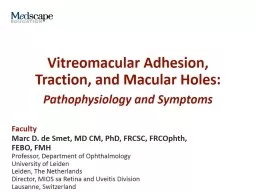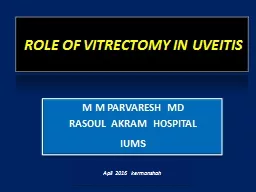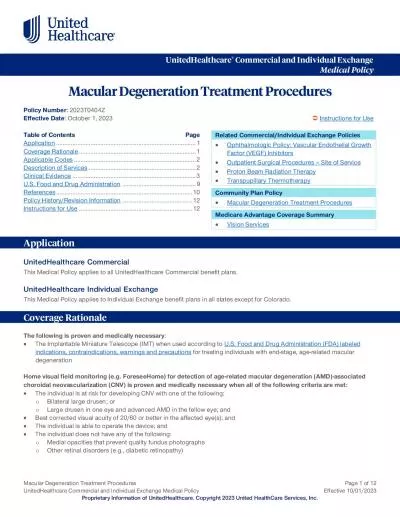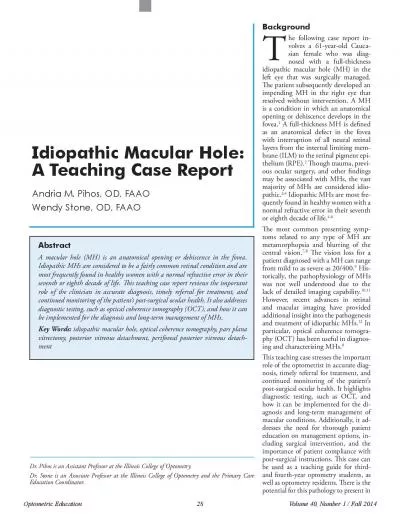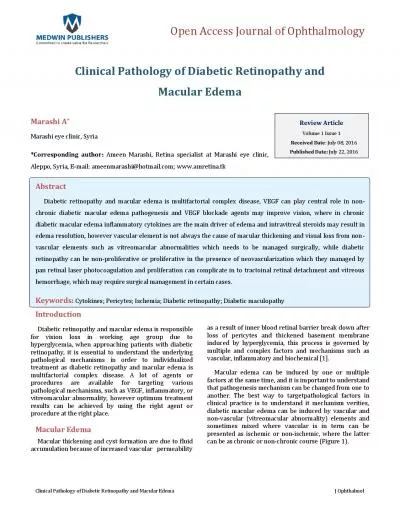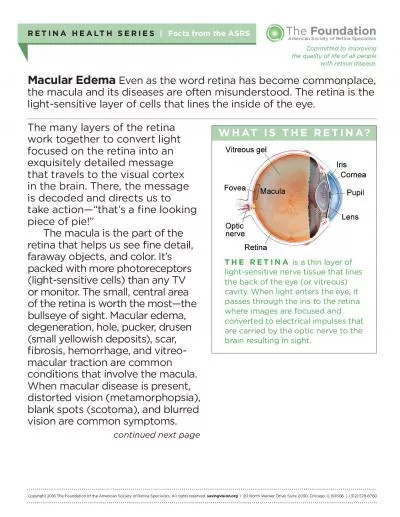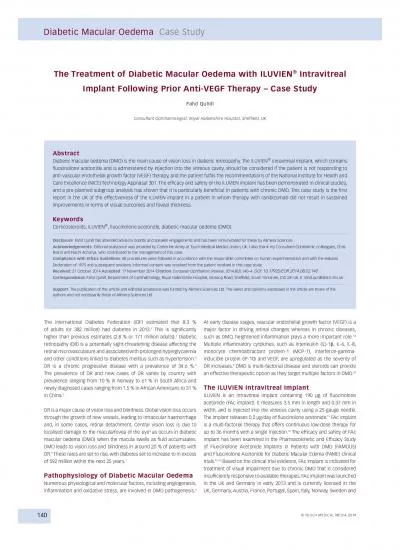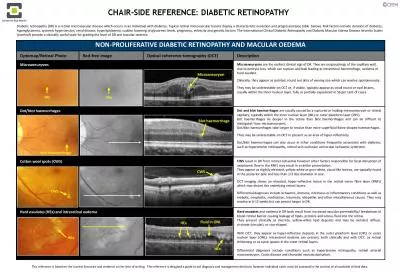PPT-Role of vitrectomy the treatment of diabetic macular edema
Author : alexa-scheidler | Published Date : 2017-12-29
Mehdi Modarres zadeh MD Iran University of Medical Sciences Kermanshah Retina Seminar April 2016 Questions In cases of vitreomacular traction associated with
Presentation Embed Code
Download Presentation
Download Presentation The PPT/PDF document "Role of vitrectomy the treatment of dia..." is the property of its rightful owner. Permission is granted to download and print the materials on this website for personal, non-commercial use only, and to display it on your personal computer provided you do not modify the materials and that you retain all copyright notices contained in the materials. By downloading content from our website, you accept the terms of this agreement.
Role of vitrectomy the treatment of diabetic macular edema: Transcript
Download Rules Of Document
"Role of vitrectomy the treatment of diabetic macular edema"The content belongs to its owner. You may download and print it for personal use, without modification, and keep all copyright notices. By downloading, you agree to these terms.
Related Documents



